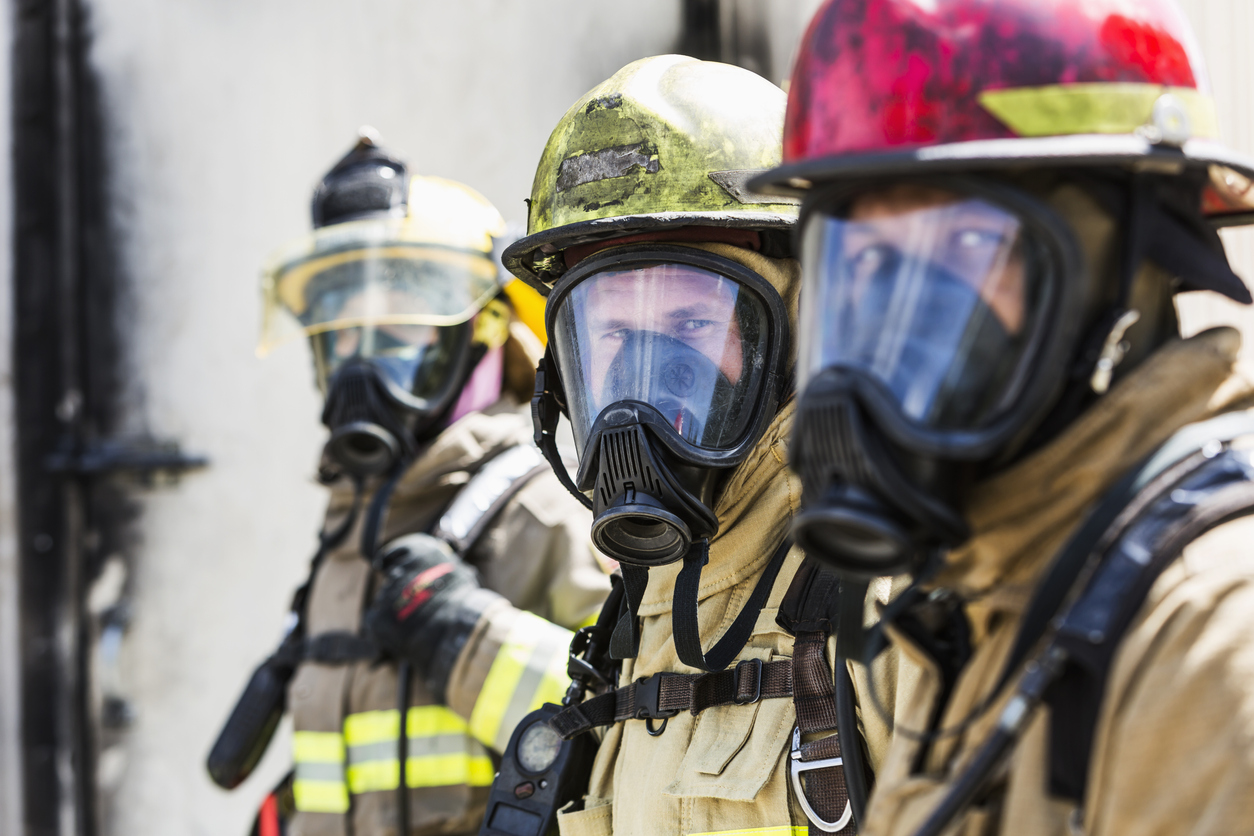
As firefighters, your clients know that their day-to-day operations could include confronting chemical contamination. But what about a whole new kind of contamination in COVID-19? The spread of the coronavirus this year has presented several challenges for every industry, but when it comes to essential services, such as firefighting, having to work face to face with the virus on any given call puts you in harm’s way. This creates an urgent need for implementing decontamination tactics.
Understanding how to reduce exposure is critical as different fireground activities have different exposure risk types. If your client’s fire department hasn’t already done so, it needs to develop decontamination tactics for gear and skin after fire responses to reduce the risk of exposure to COVID-19.
Reusable PPE
Firefighters who are deploying reusable PPE need to follow the proper cleaning and decontamination tactics to adequately remove contamination threats and maintain the product’s performance during its intended service term.
Some fire departments have chosen to use half facepiece respirators or use adapters for their full-face pieces to accompany their P100 cartridges. The CDC released detailed guidance for the disinfection of these PPE products.
When it comes to disinfection, manufacturers usually supply detailed recommendations that don’t destroy the PPE. In all cases, the process starts with having trained individuals performing these decontamination functions in a designated area while outfitted with gloves, a protective apron, and a face shield. For the most part, these procedures include removing the cartridges or filters, then cleaning the facepiece, disinfecting it, then rinsing and air drying.
For the disinfection component of this process, more specifically, appropriate EPS-registered disinfectants should be used as recommended by manufacturers of respirators. It’s also crucial to note that these respirators’ filter media are not dampened or subjected to liquid disinfectants. Instead, cleaning should include using filters with a hard casing that can be wiped down by cleaning wipes.
Clean, disinfect, and air-dry reusable face shields and goggles using a similar set of instructions as applied to respirators. These items are usually easier to clean but require more care in selecting a disinfectant. Furthermore, textile straps related to goggles or certain respirators have to be considered since they are porous and require different disinfection procedures.
Looking at Disinfection More Closely
Ideally, supplies for disposable PPE meets first responder and healthcare demands. However, we’ve all found out this year that that’s not possible, and shortages demand other solutions, usually turning to reusable and available products that need to be disinfected between usage.
It is possible to achieve this, however, with additional time and resources. Most importantly, it’s crucial to use disinfectants, sanitizers, and related processes appropriately to not damage the PPE from frequent use. Disposable PPE is not intended for reuse, and disinfection methods can only be applied economically.
With the harsh reality we are all facing, including how it may evolve into the near future, there is a renewed consideration of reusable PPE products that are joined with useful and effective disinfection processes to uphold their long-term use.
About Provident Fire Plus
At Provident Fire Plus, we offer custom-tailored packages to best protect firefighters and volunteer firefighters. We understand the risks that emergency response teams are subjected to on a daily basis, and have worked to serve these dedicated professionals for over 87 years. For more information about our products and policies, we invite you to contact our experts today at (855) 201-8880.

